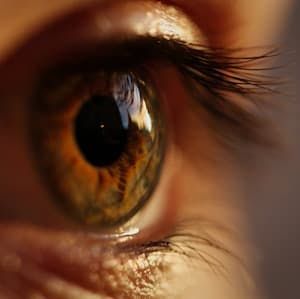Aflibercept With a Loading Dose Improves Functional Outcomes in nAMD Treatment
The presence of IRF at baseline harmed treatment response, while other factors were negligible on how well patients with nAMD responded to a loading dose of aflibercept.
Credit: Marc Schulte/Pexels

A new study suggests Intravitreal aflibercept with a loading dose improves both functional and structural outcomes in newly diagnosed patients with neovascular age-related macular degeneration (nAMD).1
According to the investigative team from Iraq, the presence of intraretinal fluid at presentation harmed visual response to treatment, leading to worse visual outcomes. Other factors were considered to have a negligible impact on nAMD outcomes.
“Overall, it is clear that the presence of intraretinal fluid in wet AMD leads to worse visual outcomes,” wrote the investigative team.
Led by Zaid Rajab Hussein, Department of Ophthalmology, Ibn Al-Haithem Teaching Eye Hospital, this prospective study evaluated the effect of a loading dose of intravitreal aflibercept administered monthly for 3 months in nAMD treatment between November 2021 and September 2022. Newly diagnosed patients with nAMD with no previous treatment of AMD were included in the study.
Demographic and clinical data were recorded pre-injection, including best-corrected visual acuity (BCVA) for functional responses and central macular thickness (CMT) and maximum area of the retinal thickness (MART). After diagnosis of nAMD with active choroidal neovascularization (CNV) lesions confirmed by optical coherence tomography angiography (OCT-A), patients were given three loading doses of aflibercept for the purpose of analysis.
Patients were reexamined one month following the last injection to assess the response to aflibercept treatment and various factors to the response of aflibercept treatment, including the presence or absence of intraretinal fluid, subretinal fluid, intraretinal hemorrhage, subretinal hemorrhage, and retinal pigment detachment.
A total of 57 eyes from 48 patients with active nAMD were included in the analysis, with a mean age of 68.3 years. The analysis showed improved vision in 20 eyes (35.1%), unchanged vision in 29 (50.9%) eyes, and worsened vision in 8 (14.0%) eyes. Results showed a statistically significant improvement in BCVA, increasing from baseline (1.3 ± 0.7) to post-aflibercept treatment (1.1 ± 0.8) by a mean difference of 0.2 ± 0.7 (P = .034).
The CMT measurement results showed a positive response in 37 eyes (64.9%), stable response in 15 eyes (26.3%), and a poor response in only 5 eyes (8.8%). Pre- and post-treatment CMT data indicated a significant decrease from 394.2 to 281.2, with a mean difference of 113.6 ± 125.9 (P <.0001).The mean MART measurement displayed a positive response in 39 eyes (68.4%), stable response in 17 eyes (29.8%), and a poor response in one eye (1.8%).
Mean MART value dropped significantly from 444.2 pre-treatment to 348.7 post-aflibercept treatment, with a mean difference of 95.4 ± 97.1 (Paired t-test, P <.0001). Retinal signs of CNV at initial presentation showed that the most prevalent was subretinal fluid (SRF) in 41 (71.9%) eyes, while was followed by intraretinal fluid (IRF) in 30 (52.6%) eyes and subretinal hemorrhage in 2 (3.5%) eyes.
Investigators observed a statistically significant association between a decrease in CMT and a decrease in IRF. Thus, they considered the persistence of IRF in 23.3% of eyes a key factor in the progression of central fibrosis and deterioration of visual acuity.
“Therefore, it is important to be aggressive and intolerant of the persistence of fluid by applying strict treatment regimes,” investigators wrote.
References
- Hussein ZR, Omar SK, Alkazraji RAM, Alsamarrai AN, Alrubaye HS, Al-Hussaniy HA. Efficacy of Aflibercept as initial treatment for neovascular age-related macular degeneration in an Iraqi patient sample. J Med Life. 2023;16(2):235-243. doi:10.25122/jml-2022-0356